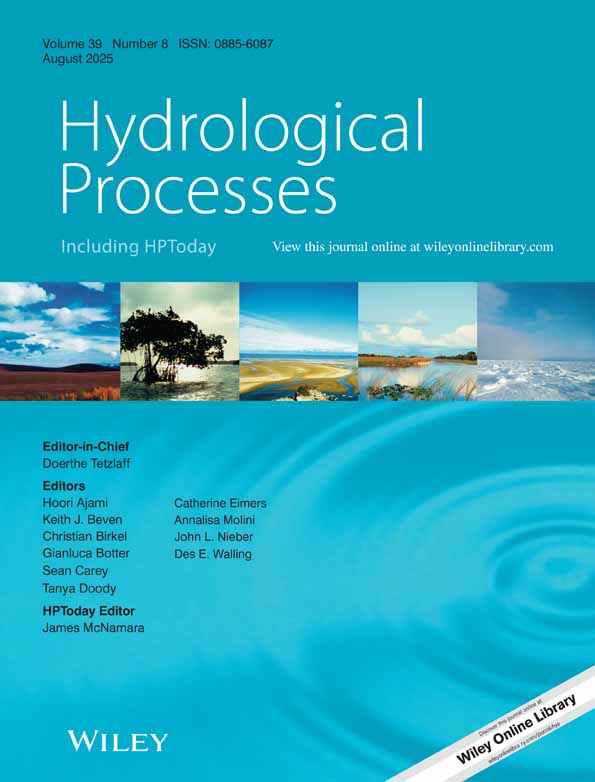A zero-order basin—its contribution to catchment hydrology and internal hydrological processes
Abstract
This study aims to evaluate the relative contribution of a zero-order basin to runoff generation in a headwater catchment as well as to elucidate internal factors affecting hydrological response. Runoff, piezometric heads, and soil temperatures were measured for a 0·25 ha zero-order basin (ZB) together with discharges from an adjacent 0·84 ha 1st-order basin (FA) and a larger 2·48 ha 1st-order basin (FB) which includes both ZB and FA. Data collected over a year showed ZB contributed to runoff generation in FB at three different levels. While continuous runoff was recorded from both FB and FA, no substantial runoff was measured for ZB during dry conditions when discharge from FB<0·5 mm d−1 (level 0: no contribution). For wetter conditions above this threshold, the ZB augmented stormflow and the discharge ratios of ZB to FB (on a unit area basis) increased rapidly from zero up to unity with increasing wetness (level 1: non-linear contribution). During the wettest periods when discharge from FB>5 mm d−1, all three basins generated runoff of the same order per unit area (level 2: linear contribution). Piezometers installed above the soil-bedrock interface (0·5 to 1·2 m depth) along the longitudinal axis of ZB responded only in the lower locations when runoff from ZB<discharge from FB. Conversely, the major runoff contribution from ZB to the discharge from FB generally coincided with a large piezometric rise near the head hollow. Soil temperatures in the head hollow fluctuated even during some rainstorms, indicating that such a large piezometric rise was caused by a convergent subsurface flow from the further upslope. Thus, shallow groundwater, which developed above the trough of ZB, would not always extend from the base to the upslope but may appear simultaneously in the head hollow. This additional contribution due to upslope topography may create additional variability and non-linearity in runoff response from ZB relative to planar hillslopes. Copyright © 2000 John Wiley & Sons, Ltd.




